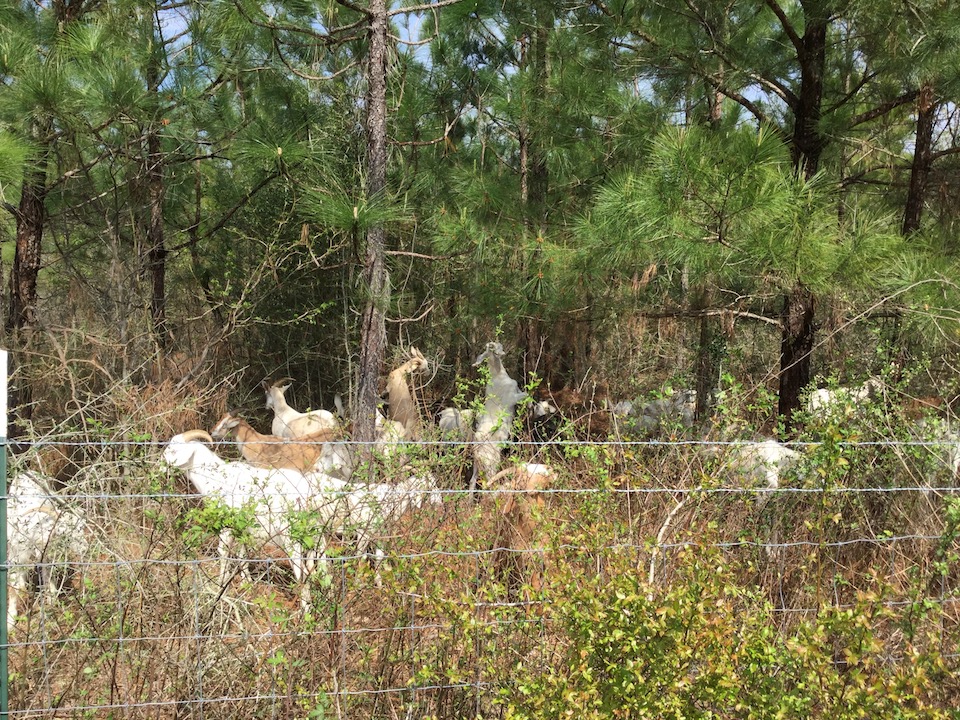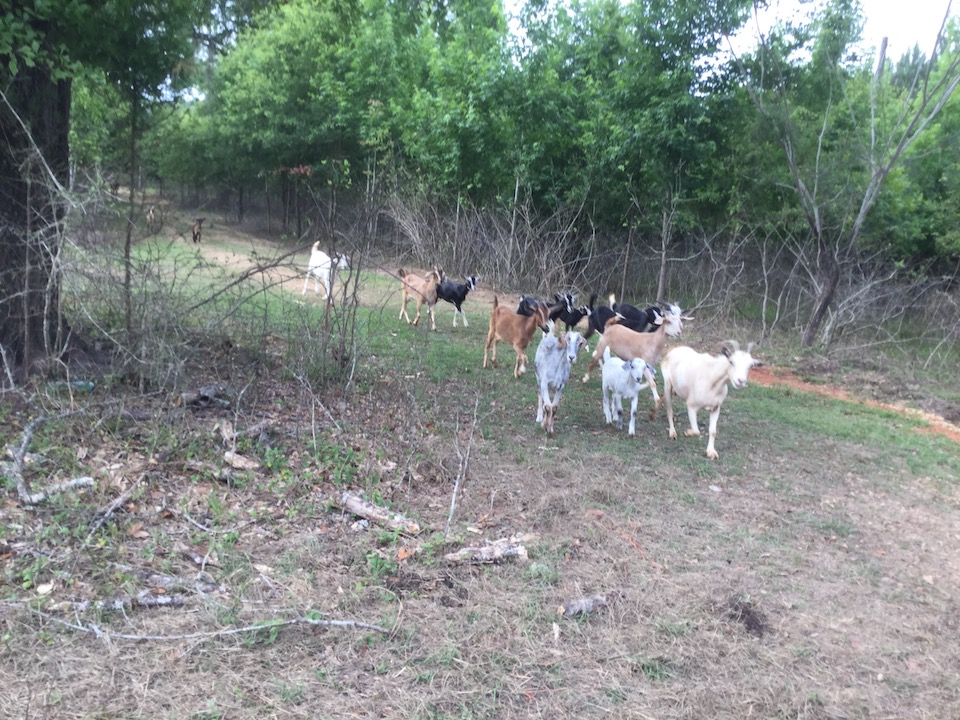Two common methods to establish silvopasture system is either planting trees on pastureland or thinning trees in the existing forests to create space for growing the understory vegetation. Due to economic constrains, limited resource landowners interested in adopting silvopasture system look for alternative methods to establish silvopasture as a way of land management. Apart from the usual methods of adopting silvopasture, farmers in West Alabama are using small ruminants to clear the understory vegetation that are naturally grown in the forest stands.
After establishing the basic facilities, such as fencing, water supply, and temporary shelter, animals are stocked to cleanup the understory vegetation. The idea is to integrate small ruminants into the naturally grown forested land to develop silvopasture that would manage the farm for both economic and environmental benefits (Figure 1). The common small ruminants used in this system are goats, which are browsers. This alternative method is not just solely based on cleaning up herbaceous vegetation and shrubs in forested land or in removing thick understory vegetation, but it is carefully designed with sustainability in mind. The land is not left vacant after goats consume most of the understory, but this results in practical steps that involve the establishment of adequate forages that actually create a sustainable silvopasture land use option.

Figure 1: Goats browsing the understory vegetation in a mixed pine-hardwood forested area.
Silvopasture has always been known to increase the usefulness of the land as well as income. Among the benefits of silvopasture systems are short-term income from forages and animals and long-term income from trees. Using goats in forested areas are not only increasing income by combining trees, animals and forages, but they are reducing labor cost in different ways as well as improving on the health of the soil, pastures, and goats (Figure 2). There are several advantages of this method. First, it reduces the initial investment cost in cleaning the land, which assists in understory plant management. Second, it minimizes the possible infestation of internal parasites by allowing goats to browse plants containing tannins and reducing grazing lower forages which expose them to gastrointestinal parasites. Third, it reduces feed cost for landowners. Fourth, it provides a resting period for pastures or enables rotational grazing between pasture and woodland. Fifth, it reduces the use of heavy equipment that might not be suitable to the site. It is worth noting that treating internal parasites of goats with a chemical dewormer is costly, It also does not guarantee success after a few years, because of possible resistance developing in these parasites to chemicals. Also, the use of machinery or herbicides for small landowners is an investment that many cannot afford. Goats offer an alternative for landowners to keep money in their pockets in different ways.

Figure 2: Herbaceous vegetation being consumed by goats
A couple of things to consider during the time goats are cleaning up understory vegetation are that stocking rates may not be a concern, but observing the goats to make sure they are not causing damage to the target trees is important. Also, goats may need to be moved from one paddock to another to accomplish the landowners’ objective. After goats have achieved the process of cleaning up the understory vegetation, or reducing the vegetation to the adequate level, establishing forages into silvopasture system is a requirement. If the goats do not create enough open space, the landowner needs to take this into consideration and work accordingly.

